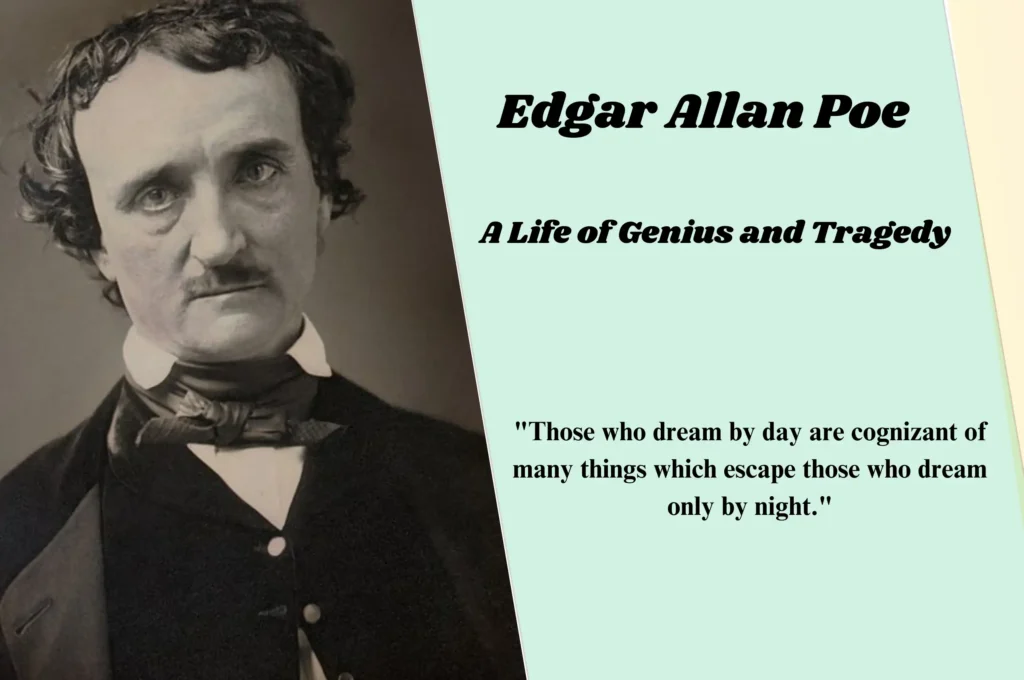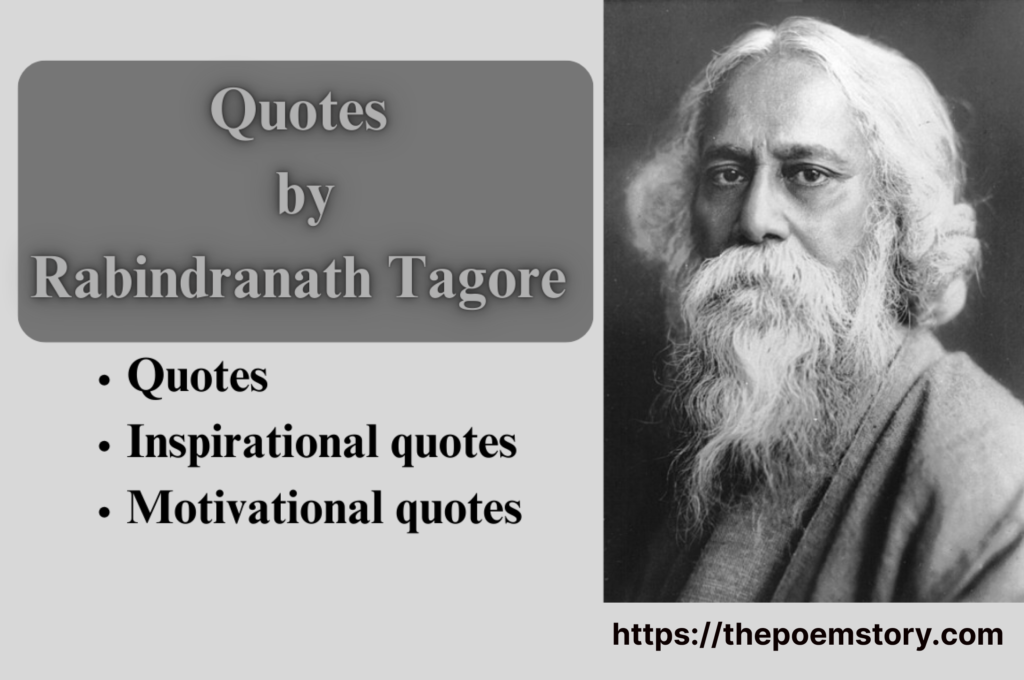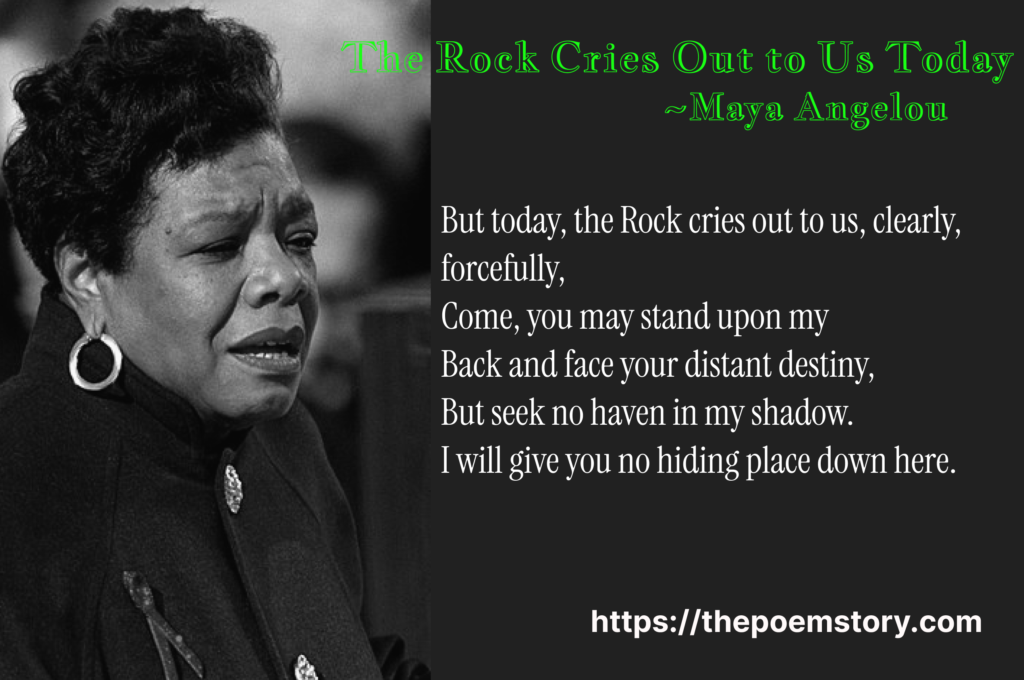In this blog post, we’ll explore Anne Brontë’s poem “Lines Composed in a Wood on a Windy Day.” We’ll talk about what the poem means, how it makes us feel, and why it still matters to us now. Let’s dive into the beauty and wisdom of Anne Brontë’s words together.
One of her poems, “Lines Composed in a Wood on a Windy Day,” takes us on a journey through a windy forest, where nature’s wildness reflects the stormy feelings inside the speaker’s heart.
Anne Brontë didn’t just write pretty words—she spoke about important things like love, sadness, and longing. Even though she didn’t live a long life, she left behind poems and stories that touch our hearts even today.
Topics: Lines Composed in a Wood on a Windy Day, Home Poem by Anne Bronte, Lines composed in a wood on a windy day line by line explanation, lines composed in a wood on a windy day analysis, lines composed in a wood on a windy day summary
Table of Contents
Lines Composed in a Wood on a Windy Day Lyrics
By Anne Brontë (One of the Bronte Sisters)
Topics: Lines Composed in a Wood on a Windy Day, Home Poem by Anne Bronte, Lines composed in a wood on a windy day line by line explanation, lines composed in a wood on a windy day analysis, lines composed in a wood on a windy day summary
My soul is awakened, my spirit is soaring
And carried aloft on the wings of the breeze;
For above and around me the wild wind is roaring,
Arousing to rapture the earth and the seas.
The long withered grass in the sunshine is glancing,
The bare trees are tossing their branches on high;
The dead leaves beneath them are merrily dancing,
The white clouds are scudding across the blue sky.
I wish I could see how the ocean is lashing
The foam of its billows to whirlwinds of spray;
I wish I could see how its proud waves are dashing,
And hear the wild roar of their thunder to-day!
Oh, beauty of nature, thou never dost pall me,
Though horror and anguish may darken thy brow;
For often the sunset of thought will recall me
From visions of sorrow to moments of thou.
And still I shall feel a thougth arise quickening,
A sense of the beauty that dwells in the vale,
Where the flowrets of earth and the stars of its heaven,
Are mingled in love, and are kissing the gale.
Then the scene of the combat, the terror, and glory,
The dark rolling stream of the death-crimson’d plain;
And the black clouds of war, shall fade into story,
And the tempest of blood be all vanished again.
Oh! the fair laughing stream, and the sweet beaming ray
Of the sunshine of love, will my weak heart restore;
For nature seems smiling in beauty to-day,
And life’s darkest vale seems all sunny once more.
How brightly glistening in the sun
The woodland ivy plays!
While yonder beeches from their barks
Reflect his silver rays.
That sun surveys a lovely scene
From softly smiling skies;
And wildly through unnumbered trees
The wind of winter sighs:
Now loud, it thunders o’er my head,
And now in distance dies.
But give me back my barren hills
Where colder breezes rise;
Where scarce the scattered, stunted trees
Can yield an answering swell,
But where a wilderness of heath
Returns the sound as well:
For yonder garden, fair and wide,
With groves of evergreen,
Long winding walks, and borders trim,
And velvet lawns between;
Restore to me that little spot,
With grey walls compassed round,
Where knotted grass neglected lies,
And weeds usurp the ground.
Though all around this mansion high
Invites the foot to roam,
And though its halls are fair within—
Oh, give me back my home!
Lines Composed In A Wood On A Windy Day Line by Line Explanation
My soul is awakened, my spirit is soaring
And carried aloft on the wings of the breeze;
For above and around me the wild wind is roaring,
Arousing to rapture the earth and the seas.
Here, the speaker expresses a profound sense of awakening and elevation of the spirit. The use of “soul” and “spirit” suggests a deep inner awakening or enlightenment. It implies that the speaker feels alive, vibrant, and connected to something greater than themselves.
The speaker metaphorically describes being lifted or carried upward by the gentle movement of the breeze. This imagery evokes a feeling of freedom, as if the speaker’s spirit is being lifted and transported by the wind, allowing them to transcend earthly limitations.
The speaker describes the wind as “wild” and “roaring,” emphasizing its powerful and untamed nature. This imagery creates a sense of drama and intensity, suggesting that the wind is not just a gentle breeze but a force of nature that commands attention.
The speaker suggests that the wind’s powerful presence is stirring up excitement and joy (“rapture”) not only in the speaker but also in the natural world (“the earth and the seas”). This line underscores the idea that nature is alive and responsive, capable of evoking profound emotions and sensations in those who experience it.
Overall, these lines convey a sense of spiritual awakening and exhilaration as the speaker connects with the natural world, particularly through the dynamic and invigorating presence of the wind. The imagery of being carried aloft by the breeze and the wild wind arousing rapture in both the speaker and the surrounding environment captures the transcendent power of nature to uplift and inspire the human spirit.
The long withered grass in the sunshine is glancing,
The bare trees are tossing their branches on high;
The dead leaves beneath them are merrily dancing,
The white clouds are scudding across the blue sky.
The speaker observes the withered grass, which is likely dry and lacking in vitality, yet it still appears to shimmer or reflect light (“glancing”) in the sunshine. This line suggests that even in its faded state, the grass retains a subtle beauty when illuminated by the sun.
Here, the speaker describes how the bare trees, stripped of their leaves, are moving their branches vigorously (“tossing”) upward. This imagery evokes a sense of energy and motion, as if the trees are engaged in a lively dance or gesture of defiance against the wind.
The speaker observes the dead leaves scattered beneath the trees, which are depicted as dancing joyfully (“merrily”). This personification of the leaves suggests a sense of vitality and playfulness, despite their lifeless state. It also underscores the idea of nature’s resilience and capacity for beauty even in decay.
The speaker describes the movement of white clouds swiftly (“scudding”) across the expanse of the blue sky. This imagery conveys a sense of speed and freedom, as if the clouds are racing across the sky propelled by the wind. It also adds to the dynamic atmosphere of the scene, highlighting the interaction between the elements of nature.
Overall, these lines paint a vivid picture of a windswept landscape where even the seemingly lifeless elements, such as withered grass and bare trees, come to life in the play of sunlight and wind. The imagery of movement and vitality, from the dancing leaves to the swiftly moving clouds, reinforces the theme of nature’s energy and beauty even in moments of change and transition.
I wish I could see how the ocean is lashing
The foam of its billows to whirlwinds of spray;
I wish I could see how its proud waves are dashing,
And hear the wild roar of their thunder to-day!
The speaker longs to witness the ocean’s fury and intensity as it lashes against the shore. This imagery evokes a sense of the ocean’s relentless energy and the force with which its waves crash against the coastline.
The speaker imagines the foam and spray created by the ocean’s crashing waves, which are whipped up into whirlwinds of spray by the force of the wind. This imagery conveys the chaotic and tumultuous nature of the ocean during a storm, as waves churn and crash against each other.
The speaker expresses a desire to witness the ocean’s waves, described as “proud,” crashing against the shore with strength and vigor. This imagery highlights the power and grandeur of the ocean, as it asserts its dominance over the land.
The speaker longs to hear the thunderous roar of the ocean’s waves crashing against the shore. This auditory imagery conveys the awe-inspiring sound of the ocean during a storm, evoking a sense of both fear and admiration for its raw power.
Overall, these lines capture the speaker’s fascination and reverence for the ocean’s natural beauty and power. The imagery of crashing waves, foaming billows, and roaring thunder conveys the ocean’s majestic and awe-inspiring presence, even in absentia.
Oh, beauty of nature, thou never dost pall me,
Though horror and anguish may darken thy brow;
For often the sunset of thought will recall me
From visions of sorrow to moments of thou.
Despite the presence of suffering and sorrow (“horror and anguish”), the speaker acknowledges that nature’s beauty remains unchanged. The phrase “darken thy brow” suggests that even in times of darkness or distress, nature’s beauty endures as a source of light and comfort.
The speaker suggests that moments of reflection (“the sunset of thought”) bring to mind memories or experiences of nature’s beauty. This imagery evokes the calming and introspective quality of watching a sunset, which can serve as a reminder of the peace and tranquility found in nature.
The speaker describes how thoughts of nature (“moments of thou”) have the power to lift them from feelings of sadness or despair (“visions of sorrow”). This line emphasizes the restorative and uplifting influence of nature, which can provide solace and perspective during times of difficulty.
Overall, these lines convey the speaker’s deep reverence for the enduring beauty and comfort found in nature, even amidst life’s trials and tribulations. Nature serves as a source of solace and renewal, offering moments of respite and reflection in the face of adversity.
And still I shall feel a thougth arise quickening,
A sense of the beauty that dwells in the vale,
Where the flowrets of earth and the stars of its heaven,
Are mingled in love, and are kissing the gale.
The speaker anticipates that they will continue to experience moments of inspiration and awakening (“a thought arise quickening”). This line suggests that the speaker’s connection to nature sparks moments of insight and vitality, stirring their thoughts and emotions.
The speaker acknowledges an awareness of the inherent beauty found in the valley (“the vale”). This line conveys a deep appreciation for the natural landscape, emphasizing the tranquility and serenity that characterizes the valley.
The speaker describes the valley as a place where earthly flowers (“flowrets”) and celestial stars (“stars of its heaven”) coexist in harmony. This imagery juxtaposes elements of the terrestrial and celestial realms, highlighting the interconnectedness of the natural world.
The speaker portrays a scene of intimacy and unity, as the flowers and stars are depicted as sharing affection (“mingled in love”) and interacting with the wind (“kissing the gale”). This imagery evokes a sense of harmony and symbiosis within nature, where all elements are interconnected and mutually enriching.
Overall, these lines convey the speaker’s profound sense of connection to the beauty and harmony of nature. Through vivid imagery and emotive language, the speaker celebrates the vitality and interconnectedness of the natural world, finding solace and inspiration in its timeless splendor.
Then the scene of the combat, the terror, and glory,
The dark rolling stream of the death-crimson’d plain;
And the black clouds of war, shall fade into story,
And the tempest of blood be all vanished again.
The speaker alludes to scenes of warfare, depicting the turmoil and intensity of combat (“the combat, the terror, and glory”). This line evokes images of battlefields filled with strife, fear, and moments of valor.
Here, the speaker describes the battlefield as a “dark rolling stream” stained with the crimson color of blood (“death-crimson’d plain”). This vivid imagery conveys the grim and somber atmosphere of war, where lives are lost, and sacrifices are made amidst the chaos of conflict.
The speaker suggests that the clouds of war, symbolizing the darkness and uncertainty of conflict, will eventually dissipate and become part of history (“fade into story”). This line conveys a sense of hope and optimism, implying that even the most tumultuous of times will eventually pass.
The speaker concludes by envisioning a future where the violence and bloodshed of war (“the tempest of blood”) have ceased and disappeared entirely. This imagery conveys a sense of relief and resolution, as the horrors of war are consigned to the past.
Overall, these lines convey the speaker’s contemplation of the cyclical nature of human conflict and the eventual fading of its impact over time. Through powerful imagery and emotive language, the speaker reflects on the impermanence of violence and the enduring hope for peace and reconciliation.
Oh! the fair laughing stream, and the sweet beaming ray
Of the sunshine of love, will my weak heart restore;
For nature seems smiling in beauty to-day,
And life’s darkest vale seems all sunny once more.
The speaker expresses admiration for the beauty and vitality of nature, symbolized by the “fair laughing stream” and the “sweet beaming ray” of sunlight. This imagery evokes a sense of joy and tranquility, as the speaker finds comfort in the peaceful and harmonious aspects of the natural world.
The speaker suggests that the warmth and affection of love (“sunshine of love”) have the power to heal and strengthen their fragile heart. This line conveys a sense of vulnerability and longing, as the speaker seeks solace and support in the embrace of love.
The speaker perceives nature as radiant and joyful on this particular day, as if it is smiling with beauty and vitality. This imagery conveys a sense of optimism and hope, as the speaker finds reassurance in the uplifting presence of nature.
The speaker reflects on how the beauty of nature and the warmth of love have the ability to transform even the darkest moments of life into moments of brightness and optimism. This line conveys a sense of renewal and resilience, as the speaker finds light and hope amidst life’s challenges.
Overall, these lines convey the speaker’s deep appreciation for the restorative power of nature and the transformative influence of love. Through evocative imagery and emotive language, the speaker finds solace and renewal in the beauty and warmth of the natural world, even in the midst of life’s trials and tribulations.
How brightly glistening in the sun
The woodland ivy plays!
While yonder beeches from their barks
Reflect his silver rays.
The speaker marvels at the brightness and sparkle of something in the sunlight. This line conveys a sense of wonder and admiration for the radiant quality of the natural world when illuminated by the sun.
The speaker observes the ivy, a type of climbing plant commonly found in wooded areas, as it seems to dance or move gracefully in the sunlight. This imagery evokes a sense of liveliness and movement within the forest, as the ivy sways in the breeze.
The speaker directs attention to the beech trees in the distance (“yonder”), noting how their bark reflects or shines in the sunlight. This line highlights the interplay between light and shadow in the forest, as the sunlight is absorbed and reflected by the trees.
The speaker describes how the beech trees reflect the sun’s rays, which are depicted as “silver” in color. This imagery creates a sense of luminosity and enchantment, as the sunlight is transformed into shimmering silver reflections on the bark of the trees.
Overall, these lines capture the speaker’s appreciation for the beauty and enchantment of the natural world, particularly the play of light and shadow in a sunlit woodland setting. Through vivid imagery and evocative language, the speaker invites readers to join in their awe and wonder at the magical qualities of the forest landscape.
Home Poem by Anne Bronte
Topics: Lines Composed in a Wood on a Windy Day, Home Poem by Anne Bronte, Lines composed in a wood on a windy day line by line explanation, lines composed in a wood on a windy day analysis, lines composed in a wood on a windy day summary
The lines now are also referred as Home Poem by Anne Bronte.
That sun surveys a lovely scene
From softly smiling skies;
And wildly through unnumbered trees
The wind of winter sighs:
The speaker acknowledges the presence of the sun, which is depicted as observing or overseeing (“surveys”) a picturesque scene. This line suggests that the sun plays a central role in illuminating and enhancing the beauty of the natural world.
The speaker describes the sky as “softly smiling,” suggesting a gentle and serene atmosphere. This imagery conveys a sense of tranquility and warmth, as if the sky itself is content and peaceful, adding to the overall beauty of the scene.
The speaker introduces the element of the wind, which is described as blowing “wildly” through a multitude of trees. This imagery conveys a sense of movement and energy, as the wind rustles through the branches and leaves of the forest.
The speaker specifies that it is the “wind of winter” that is sighing or blowing through the trees. This description evokes a feeling of coldness and desolation, as the winter wind adds a sense of melancholy to the scene.
Overall, these lines capture the atmosphere of a winter day, with the sun illuminating a beautiful landscape while the winter wind adds a sense of wildness and chill. Through vivid imagery and evocative language, the speaker paints a rich and immersive portrait of the natural world, inviting readers to experience the sights and sounds of the winter forest.
Now loud, it thunders o’er my head,
And now in distance dies.
But give me back my barren hills
Where colder breezes rise;
The speaker describes the wind as thundering loudly overhead, creating a sense of intensity and power. This imagery conveys the forceful and imposing nature of the wind as it rushes through the forest.
The speaker notes that the sound of the wind fades away in the distance. This line suggests a sense of fluctuation or variability in the intensity of the wind, as it alternates between roaring loudly and diminishing into the distance.
Here, the speaker expresses a desire to return to the barren hills, preferring their stark and desolate landscape over the bustling activity of the forest. This line conveys a sense of longing for solitude and simplicity amidst the chaos of the natural world.
The speaker highlights the presence of colder breezes on the barren hills, contrasting them with the warmer and more turbulent winds of the forest. This imagery suggests a preference for the bracing chill of the hills over the tumultuous winds of the forest.
Overall, these lines convey the speaker’s yearning for solitude and tranquility amidst the tumultuous sounds of the forest. Through evocative imagery and emotive language, the speaker expresses a longing for the barren hills and colder breezes, seeking refuge from the chaos and noise of the natural world.
Where scarce the scattered, stunted trees
Can yield an answering swell,
But where a wilderness of heath
Returns the sound as well:
The speaker describes the hills as having few trees, and those that exist are stunted or small in size. This imagery conveys a sense of desolation and emptiness, highlighting the lack of abundant vegetation in this landscape.
The speaker suggests that the trees are unable to produce a significant or noticeable response to the wind. This line conveys a sense of stillness and quietness, as if the trees are unable to offer a meaningful reaction to the forces of nature around them.
Here, the speaker introduces the idea of a wilderness dominated by heath, a type of shrubby vegetation common in moorland landscapes. This imagery suggests a vast and untamed expanse of land, characterized by its rugged and wild beauty.
The speaker notes that the heath returns the sound of the wind, echoing its presence throughout the landscape. This line conveys a sense of openness and expansiveness, as the wind’s presence is felt and heard across the vast wilderness of heath.
Overall, these lines capture the speaker’s longing for the barren hills and the rugged beauty of the heath-covered landscape. Through vivid imagery and emotive language, the speaker expresses a desire for solitude and simplicity, seeking refuge in the quiet expanse of the natural world.
For yonder garden, fair and wide,
With groves of evergreen,
Long winding walks, and borders trim,
And velvet lawns between;
The speaker refers to a garden located in the distance (“yonder”), describing it as “fair and wide.” This imagery conveys a sense of expansiveness and beauty, suggesting that the garden is both visually appealing and spacious.
The speaker mentions the presence of groves filled with evergreen trees in the garden. Evergreens, which retain their foliage year-round, are often associated with vitality and permanence, adding to the sense of lushness and abundance in the garden.
The speaker describes the garden as having winding pathways and neatly trimmed borders. This imagery evokes a sense of orderliness and structure, suggesting that the garden is carefully tended and maintained.
The speaker mentions the presence of velvet-like lawns between the pathways and borders. This imagery conveys a sense of luxury and softness, suggesting that the lawns are lush and well-manicured, adding to the overall beauty of the garden.
Overall, these lines paint a vivid picture of a garden characterized by its beauty, spaciousness, and meticulous design. Through evocative imagery and descriptive language, the speaker contrasts the cultivated beauty of the garden with the rugged and untamed landscape of the barren hills, highlighting the diversity and richness of the natural world.
Restore to me that little spot,
With grey walls compassed round,
Where knotted grass neglected lies,
And weeds usurp the ground.
The speaker expresses a desire to return to a specific location, described as a “little spot.” This suggests that the spot holds sentimental value or personal significance to the speaker, prompting a sense of longing for its restoration.
The speaker describes the spot as being enclosed by grey walls. This imagery conveys a sense of confinement or enclosure, suggesting that the spot is secluded or protected from the outside world.
The speaker refers to the grass in the spot as “knotted” and “neglected,” implying that it is overgrown and unkempt. This imagery conveys a sense of wildness and neglect, suggesting that the spot is untamed and untouched by human hands.
The speaker notes that weeds have taken over the ground in the spot, suggesting that they have grown unchecked and uncontested. This imagery conveys a sense of disorder and chaos, as the weeds have overrun the space and disrupted its natural balance.
Overall, these lines capture the speaker’s longing for a neglected and untamed spot, contrasting it with the cultivated beauty of the garden mentioned earlier. Through evocative imagery and emotive language, the speaker expresses a desire for simplicity and authenticity, seeking refuge in the wild and unspoiled corners of the natural world.
Though all around this mansion high
Invites the foot to roam,
And though its halls are fair within—
Oh, give me back my home!
The speaker acknowledges the appeal of the grand mansion and its surroundings, suggesting that the expansive estate encourages exploration and wandering. This imagery conveys a sense of luxury and abundance, as the mansion and its grounds are described as inviting and expansive.
The speaker notes that the interior of the mansion is beautiful and well-appointed, suggesting that its halls are elegant and impressive. This imagery conveys a sense of grandeur and refinement, as the interior of the mansion is described as luxurious and tastefully decorated.
Despite the allure of the mansion and its surroundings, the speaker expresses a heartfelt desire to return to their own humble home. This line conveys a sense of nostalgia and longing, as the speaker yearns for the familiarity and comfort of their own dwelling.
Overall, these lines capture the speaker’s longing for their humble and familiar home amidst the grandeur and opulence of the mansion. Through emotive language and evocative imagery, the speaker expresses a deep-seated desire for the simplicity and authenticity of their own dwelling, seeking refuge in the cherished memories and comforts of home.
Lines Composed In A Wood On A Windy Day Summary
Topics: Lines Composed in a Wood on a Windy Day, Home Poem by Anne Bronte, Lines composed in a wood on a windy day line by line explanation, lines composed in a wood on a windy day analysis, lines composed in a wood on a windy day summary
“Lines Composed in a Wood on a Windy Day” by Anne Brontë is a reflective exploration of the speaker’s interaction with nature and their longing for simplicity amidst the turbulence of life. The poem opens with vivid imagery of sunlight illuminating the forest, highlighting the beauty of the natural world. However, as the poem progresses, the speaker contrasts this lively scene with a desire for the barren hills and neglected spots, where solitude and tranquility reign.
Throughout the poem, Brontë weaves themes of nature’s enduring beauty and the transient nature of human existence, emphasizing the speaker’s yearning for authenticity and connection amidst the complexities of life. Ultimately, the poem concludes with a poignant longing for the familiarity and comfort of home, underscoring the universal human desire for belonging and refuge. Through its evocative imagery and contemplative tone, “Lines Composed in a Wood on a Windy Day” invites readers to reflect on their own relationship with nature and the pursuit of inner peace in a turbulent world.
Lines Composed In A Wood On A Windy Day Analysis
Topics: Lines Composed in a Wood on a Windy Day, Home Poem by Anne Bronte, Lines composed in a wood on a windy day line by line explanation, lines composed in a wood on a windy day analysis, lines composed in a wood on a windy day summary
“Lines Composed in a Wood on a Windy Day” by Anne Brontë is a reflective poem that delves into themes of nature, human emotion, and the quest for inner peace. Here’s a detailed analysis of the poem:
- Setting and Imagery: The poem begins with vivid descriptions of a sunlit woodland scene, where ivy glistens and beech trees reflect sunlight. This imagery sets a picturesque backdrop and establishes a serene atmosphere.
- Contrast and Longing: As the poem progresses, the speaker contrasts the vibrant energy of the forest with a longing for the barren hills and neglected spots. This longing suggests a desire for simplicity and solitude amidst the chaos of the natural world.
- Connection to Nature: Throughout the poem, Brontë highlights the speaker’s deep connection to nature. The speaker finds solace and restoration in the beauty of the natural world, expressing a profound appreciation for its tranquility and authenticity.
- Themes of Transience and Impermanence: The poem explores themes of transience and impermanence, as seen in the fleeting beauty of sunlight on the ivy and the changing dynamics of the wind. This reflects the broader theme of the passage of time and the ephemeral nature of human existence.
- Yearning for Home: Towards the end of the poem, the speaker expresses a poignant longing for the familiarity and comfort of home, despite the grandeur of the surrounding mansion. This longing suggests a deeper yearning for belonging and refuge in the face of life’s complexities.
- Emotional Resonance: Brontë infuses the poem with emotional resonance, capturing the speaker’s contemplative mood and inner turmoil. The poem evokes feelings of nostalgia, longing, and introspection, inviting readers to reflect on their own relationship with nature and the pursuit of inner peace.
- Universal Themes: “Lines Composed in a Wood on a Windy Day” addresses universal themes that resonate with readers across time and culture. The poem speaks to the human experience of seeking solace, connection, and meaning amidst the turbulence of life.
In summary, Anne Brontë’s “Lines Composed in a Wood on a Windy Day” is a poignant exploration of nature’s beauty, human emotion, and the quest for inner peace. Through its vivid imagery, contemplative tone, and universal themes, the poem offers readers a profound meditation on the complexities of existence and the enduring power of nature to uplift and inspire.
Topics: Lines Composed in a Wood on a Windy Day, Home Poem by Anne Bronte, Lines composed in a wood on a windy day line by line explanation, lines composed in a wood on a windy day analysis, lines composed in a wood on a windy day summary
List of Poets in Alphabetical Order
कवियों की सूची

















